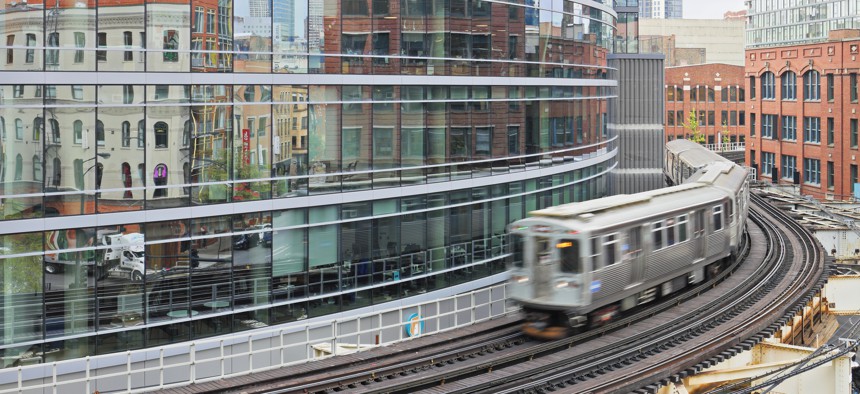Revamping Mobility With a Renewed Focus on Communities

GettyImages/S. Greg Panosian
COMMENTARY | As cities move back to pre-pandemic lifestyles, government and industry must come together and drive mobility toward a more sustainable and equitable future.
The past year saw teams begin to go back into the office and companies implementing hybrid work models that allowed for flexibility and safety during the Covid-19 pandemic. As these trends continue in 2022, pressing transportation challenges will loom over the world’s metropolises with the influx of commuters rivaling pre-pandemic levels. Increased emissions, traffic congestion and infrastructure strain will remind city planners and local authorities of the need to revamp their transportation systems to focus on sustainability, accessibility, safety and reliability.
2022 presents an opportunity for organizations to review the current state of their public transportation networks and explore how they can bring them into the modern age of mobility. Read ahead to learn what the solutions to urbanization’s greatest challenges are and how they can be implemented across an entire transportation system to benefit communities.
Prioritizing Sustainability
This year and for the foreseeable future, sustainability will have to be at the forefront of discussions about city planning. Chief among those discussions is the role of transportation in addressing the strains that population growth and urbanization are putting on existing infrastructure. As cities move toward pre-pandemic lifestyles, it’s important they remember how interconnected transportation, congestion and climate issues are.
With transportation being the most significant emitters, transport and related management policies will unavoidably have an impact on climate change. In this sense, every transportation policy must be viewed as a climate policy. As a result, increasing public transit usage is the single most effective way to immediately reduce carbon emissions, reduce congestion and improve public health. The key to reducing car dependence and shifting travelers to public transportation is to pursue transit-first policies.
Through increasing data sharing, taking a strategic approach to procurement and improving coordination between public and private mobility projects, transit agencies can support the efforts of individual citizens to reduce private car use and back the use of valuable road space for things such as better footpaths for pedestrians, new cycleways and bus rapid transit lanes, which will help make cities more livable, equitable, healthy and sustainable.
Accessibility as a Right
When assessing solutions, transit agencies must view mobility as a human right; everyone should be able to travel around their city or town in a safe, seamless and stress-free manner. It can no longer be presumed that a one-size-fits-all strategy is adequate for innovation as transportation technology advances. More than 6% of U.S. households, or 4.1 million people, are unbanked, and 15% of Americans do not own a smartphone, which underscores the importance of finding creative solutions that address the needs of all, regardless of income or status.
To do so, transportation technology companies and transit authorities can adopt a comprehensive approach to planning by ensuring that equity and inclusion are at the core of future plans. Agencies can establish a mobility ecosystem for all by getting to know their communities and meeting riders where they are. Using transit as a model can show what’s achievable in accessibility by laying out a plan for diverse customer bases to achieve equity this year and beyond.
Greater Safety With Modern Technology
Advances in transportation technology can revolutionize the way people travel through and interact with the cities they call home. Technology can also have a significant impact on safety. In the first half of 2021, over 20,000 people died on U.S. roads, with about 50% of those deaths taking place at or around signalized intersections. The industry has the technology and now, thanks to the Infrastructure Investment and Jobs Act, the resources to dramatically enhance efficiency and safety.
Developments such as computer vision will grow in importance by making intersections more efficient and secure for both vehicles and vulnerable road users such as pedestrians and cyclists. Computer vision can also be employed to track safety measures like near-misses and hazardous driving. These safety indicators can be used to identify areas in need of improvement, as well as to quantify the impact of those improvements once they are implemented.
The usage of adaptive traffic signal control, which utilizes computer vision or other advanced detection methods, will become much more common. In San Diego, for example, the University of California San Diego is investing in traffic signal and mobility modernization to make the roads around campus not only more efficient, but also safer for drivers and pedestrians alike.
Investing in Alternative Transportation Methods
As the pandemic begins to abate, we are reminded of how significant an issue traffic congestion can be in our major cities. Many transit leaders around the globe believe mobility as a service and mobility on demand are the much-needed solutions to congestion and making transit more reliable. Some companies have already incorporated MaaS and MOD solutions by shuttling employees from metro stations to their offices or loading employee accounts with ticket payment credits to encourage staff to use public transportation. This year may see more organizations adopt similar practices for employees or customers.
It's critical to encourage more people to use public transit, as the number of commuters is expected to climb in the coming year as more people return to work. Employees may prefer to continue working remotely if MaaS and MOD solutions are not available, simply to avoid the onslaught of rush hour.
Urbanization, if left unchecked, can lead to troubling challenges across transit frameworks that may eventually have devastating consequences. 2022 is a year of enormous opportunity for city planners, governments and industries to come together and drive mobility toward a more sustainable, equitable future that will shape the way we interact and travel for years to come.
Audrey Denis is a strategy manager at Cubic Transportation Systems.
NEXT STORY: 3 Edge Computing Models for Integrated, Responsive Smart Cities





